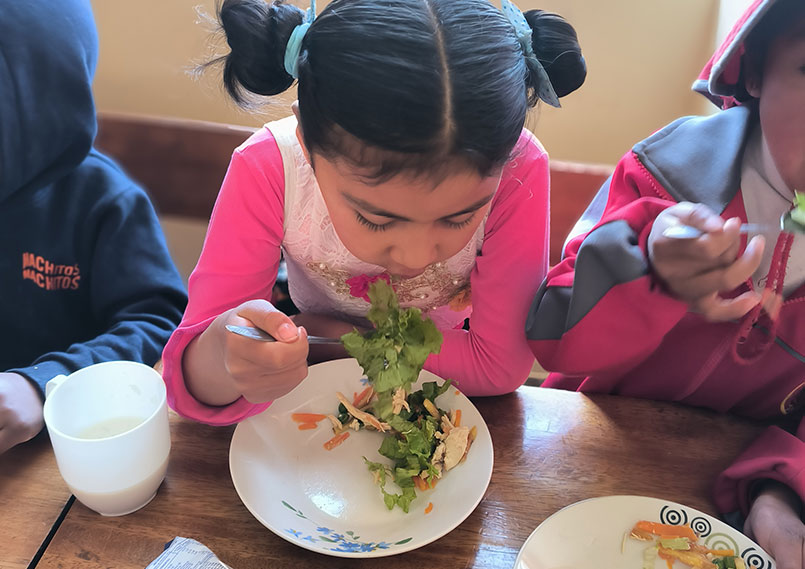Improving Nutrition in Children at the Virgen de Guadalupe School in Cusco, Peru.
Food insecurity in the world has been increasing, a situation that has worsened due to the economic and social impact of the COVID-19 pandemic. The crisis due to the “Ukrainian War” is exacerbating this situation due to the exaggerated inflation of food and fuel prices and the shortage of fertilizers, which, added to the effects of climate change, does not allow us to think about a quick improvement.
These challenges affect the population unequally and have a greater impact on populations in poverty and with various vulnerabilities, such as pregnant women, girls, boys, adolescents, older adults, indigenous people, migrants, people with disabilities, etc. This situation is repeated in Peru, where we face a “triple burden of malnutrition” such as the coexistence of malnutrition, anemia and obesity or overweight at the population, family and individual level.
In Peru, 51% of the population is food insecure. 47.5% of them are moderately food insecure, that is, they have significant deficiencies in food consumption, they satisfy their minimum food needs using irreversible coping strategies. 3.5% are severely food insecure, meaning they do not have access to enough safe and nutritious food to lead an active or healthy life, or they suffer from extreme livelihood depletion.
This nutrition project is made possible by the generosity of the Pietro Ruggeri charity.














